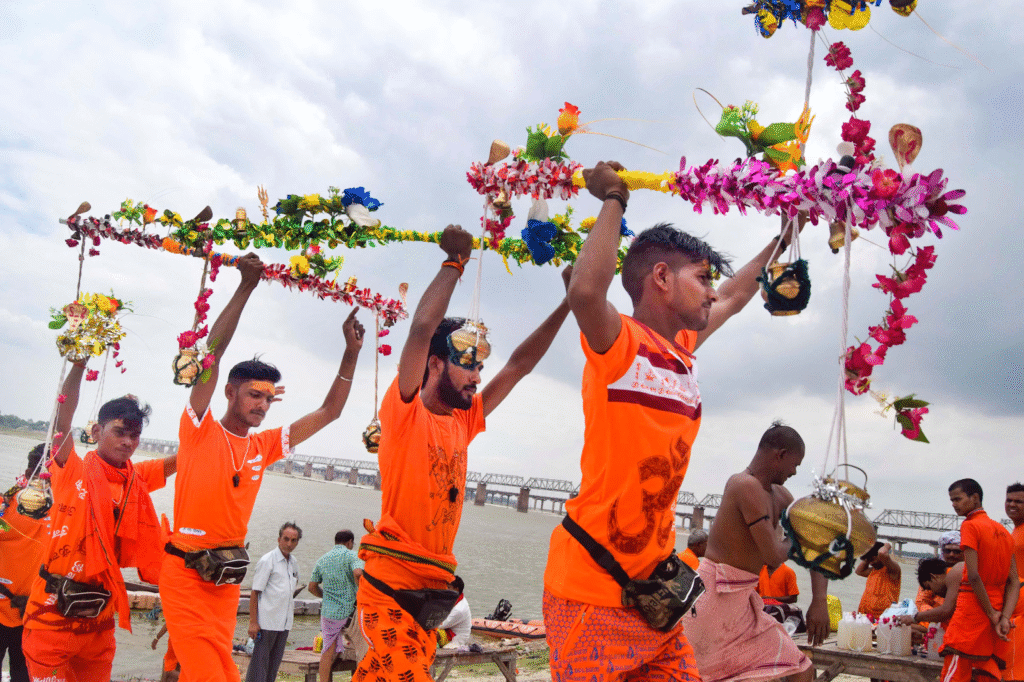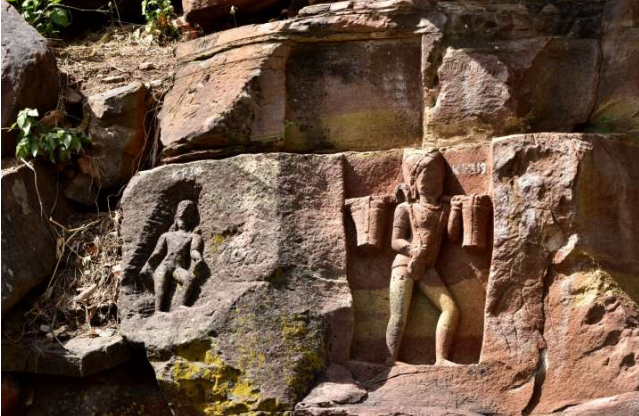The Kanwar Yatra, now one of the largest annual Hindu pilgrimages in India, has a fascinating history rooted in ancient Shaiva traditions. While today’s Kanwar Yatra may appear modern and vibrant—with lakhs of saffron-clad devotees marching barefoot—its origins can be traced back to the 7th–8th century, as evident in the art and inscriptions of Kalinjar Fort.

At Kalinjar Fort in Uttar Pradesh, an ancient sculpture dating back to the 7th–8th century CE portrays a figure named Sri Savant, the commandant of the fort. He is shown carrying a Kanwar on his shoulders, making this image the earliest known evidence of the Kanwar tradition in India.

The design of the ancient Kanwar was practical yet deeply symbolic. Unlike modern plastic Kanwars or bamboo structures with decorated pots, the original Kanwar consisted of:
Two bucket-shaped baskets tied to the ends of a sturdy wooden pole
Earthen water vessels inside each basket to protect the holy water during long journeys
A support stick held in one hand for balance
A large headgear, worn possibly as a mark of spiritual status or protection

Interestingly, a life-size image of Sri Savant can also be seen north of the Sur Sari Ganga, close to Kalinjar. The fact that his image appears multiple times across Kalinjar Fort underlines how deeply respected and symbolic this Shaiva devotee was, and how his act of Kanwar carrying was honored across generations.
The Kanwar Yatra began as an individual act of Shaiva devotion, but over time it evolved into a mass movement. This transformation occurred over centuries:
Ancient Period: Personal pilgrimage linked to Shaivism and temple offerings
Medieval Period: Adopted regionally, especially in North India
Modern Period (Post-1990s): Became a mass cultural and spiritual phenomenon, especially in Uttarakhand, Bihar, and Uttar Pradesh
The core belief behind the Kanwar Yatra remains unchanged: collecting Ganga Jal (holy water) and offering it to Lord Shiva, usually at a prominent temple such as:
Neelkanth Mahadev (Haridwar)
Baba Baidyanath Dham (Deoghar)
Kashi Vishwanath (Varanasi)
Kedarnath and other Jyotirlingas
Devotees, or Kanwariyas, often walk hundreds of kilometers barefoot, chant “Bol Bam,” and follow strict rules such as no meat, no alcohol, and no impure thoughts during the journey.
While Kanwar Yatra is a powerful expression of faith, it has also invited criticism and concern in recent years:
Promotes unity, self-discipline, and spirituality
Connects people to ancient roots
Boosts local tourism and temple economies
Traffic blockages and road jams
Aggressive behavior by a few groups
Over-commercialization and environmental pollution
Despite the issues, the heart of the tradition remains deeply spiritual, and efforts are made each year to maintain order and sanctity.
The Kanwar Yatra’s history goes far beyond what we see today. From the 7th-century image of Sri Savant at Kalinjar Fort to the millions walking with Kanwars today, it tells a story of devotion, transformation, and cultural endurance. This annual journey not only brings people closer to Lord Shiva but also revives a centuries-old Shaiva tradition that still beats strong in the hearts of modern devotees.
To access the full research findings, visual documentation, and scholarly interpretations, you can purchase Volume 9, Number 2 of the Journal of Archaeology directly from our website.